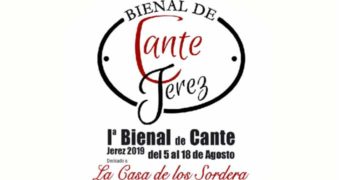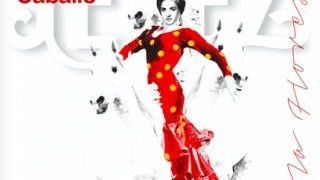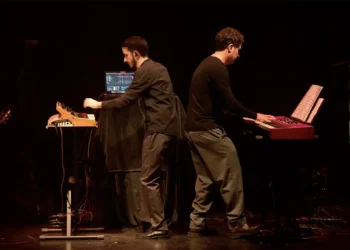|
El Güito |
|
Text: Estela Zatania El Güito Dance: El G üito, Ángela Españadero. Cante: José Jiménez, Roberto Llorente. Guitar: Pepe Maya, Juan Serrano, Basilio García. Palmas and dance: J. Miguel Téllez. There is a custom of closing out the Festival de Jerez with a recital at the Teatro Villamarta with established maestros. On this occasion, the last recital of the lengthy program was shared by two legendary veterans: Madrid dancer Eduardo Serrano “El Güito”, and guitarist Manolo Sanlúcar. A long and distinguished international career has made Güito a permanent part of the history of flamenco dance. Many who came to the theater Saturday night, above all else, wanted the thrill of being able to tell their grandchildren they had seen Güito in person. The legend danced his two most representative numbers, farruca and soleá, with the dignity and elegance not only characteristic of his style, but which he himself helped popularize. During the era of speed, leaps and turns, came Güito’s tense calm, that along with Antonio Gades, Mario Maya and Manolete gave men’s flamenco dance the dark aplomb that has served it so well. The young hopeful Güito decided to highlight this time, was Angela Españadero. Just a few years ago, she didn’t seem that interesting, but now she has turned into quite a dancer with lots of personality. She took over the stage like a real pro, found the perfect equilibrium between flamenco, elegance and energy, each move was just the way she meant it to be, and applause broke out again and again. She opened the show with a long taranto (it doesn’t seem like a good idea to begin a show with an “important” dance by a soloist). After Güito’s farruca, she retunred with alegrías, more sure of herself and even more temperamental than in the taranto. The discreet fiesta finale shows Güito to be in fine form, better than his last showing at this festival a couple of years ago, but once again it’s Angela who shines, and we can thank the maestro for having brought her to our attention. After intermission, Manolo Sanlúcar arrived on stage with his reduced group that included second guitar: David Carmona, and Rafael Hermoso “Poti” on the cajón. He was sober and subdued, even displeased. This guitarist has always been more cerebral than superficial, but this time the permanent dark clouds that seem to hang over his head, got the better of him. During bulerías in rondeña key, he stopped playing in the middle of the piece to complain to the cajón-player “when you play like that I can’t play”. He picks up the thread and continues to the end, and after dedicating a piece to women in honor of Working Women’s Day, he comments “I’d like to know what women don’t work”. The next piece is from his recording “Locura de Brisa y Trino”, and another includes the voice of Carmen Grilo. Suddenly I notice the complete absence of jazz harmonies, and that same absence makes for a more Spanish sound, less international, which feels right. Then, the maestro makes a surprising announcement. In a low voice he says he feels very bad, doesn’t want to continue playing and his performance will end with the following number. And so it was, and in that strange tone-downed way the 2008 version of the Festival de Jerez reached its conclusion.
At seven in the afternoon the last show took place at the Sala la Compañía with the discreet “Bocabajo” by dancer Mayte Bajo, and dancers Bruno Argento and Cristina Aguilera. They offered a pseudobiographical abstraction in which the most noteworthy element was the participation of guitarist José Luis Montón, who also co-authored the music. The absence of a flamenco singer (a lyrical singer was used, María Berasante), and the classically-oriented style of dance, within a flamenco framework, gave the work a sweet aesthetic, almost distant for someone accustomed to the energy of flamenco or Spanish dance; it was like watching a show behind a curtain of water. All the sweetness became tiresome, although there was certainly great beauty in the choreography, and the wardrobe was the best I’ve seen throughout the festival even though the designer’s name was not given.
|




 Mayte Bajo “Bocabajo”
Mayte Bajo “Bocabajo” 



















